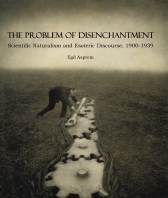
Aries 17:1 (2017)
The latest issue of Aries has just been published: A special issue on Esotericism and the Cognitive Science of Religion (CSR), edited by Markus Altena Davidsen and myself. As we explain in our editorial, “What Cognitive Scienece Offers the Study of Esotericism”, Western esotericism and CSR have developed in parallel over the past couple of decades, each, in their own ways, pushing the academic study of religion into new territory. Given that esotericism is full of psychologically rich sources (from visions and trances to hidden correspondences and esoteric hermeneutic techniques), it seems that much could be gained from bringing these two fields together. My Occult Minds project has already been taking steps in this direction. The intention behind the Aries special issue, however, is to push this agenda in a collaborative way, by publishing articles on esoteric subject matter informed by a range recent theories of cognition, together with a response article by someone in the field of CSR. We were happy to get Jesper Sørensen in this role, a central figure in the “Aarhus school” who has worked on problems that are directly relevant to esotericism.
Between the Editorial and Sørensen’s Response, the core of the issue consists of three research articles by Egil Asprem, , tackling three separate problems and drawing on different kinds of research. My own article, entitled “Explaining the Esoteric Imagination: Towards a Theory of Kataphatic Practice” draws on the “predictive coding” theory of perception to shed new light on the visualisation practices that are so central to much of modern occultism, but which, I argue, should be conceptualised for explanatory purposes as part of a generic class of “kataphatic” practice (I will write up a separate post on this later – suffice to say this is the explanatory counterpart to my recent Correspondences article on the “Scholastic imagination”).

Engraving from Fludd, Utriusque cosmi historia.
We have, in other words, three articles covering problems in the experiential, the textual-interpretive, and the conceptual dimensions of Western esotericism. While this is a good range, it only showcases a very tiny selection of empirical material, thematic issues, and CSR theories. In particular, ritual, initiation, and secrecy are three (often related) themes that seem ripe for fruitful research. Markus and I discuss some of these possibilities in our Editorial, and Sørensen’s response is rich with suggestions for further research as well.
The primary objective of the special issue is to bring the opportunities created by of CSR methods and theorising to the attention of esotericism scholars. But we also hope that it can take some small first steps towards bringing esotericism to the attention of CSR researchers. Indeed, as several of the articles argue, the next open frontier is to design collaborative projects that require a well-established dialogue between historians, fieldworkers, theoreticians, and experimentalists. If the contributions to this Aries special issue can help the dialogue forward, the editors will be very satisfied.






Leave a comment